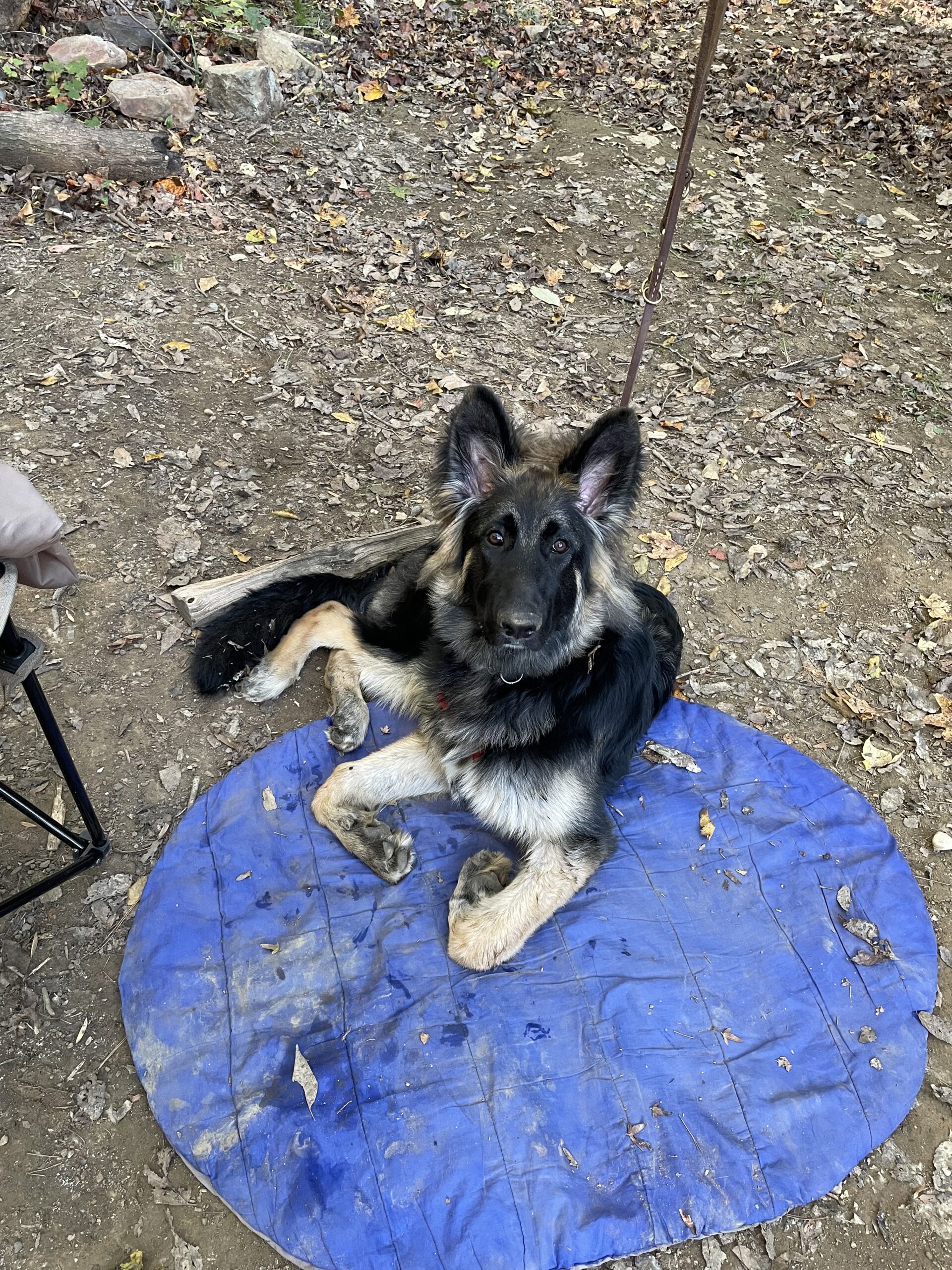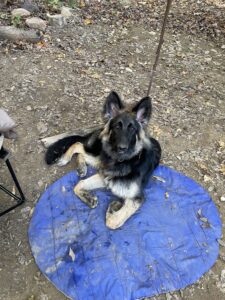Loud noises, odd people, strange surfaces, novel smells, weird structures…there’s a lot of things in new environments that our dogs might be sensitive to! Just like individual people may have noise sensitivity, be nervous traveling to new places, or be anxious in social situations – our dogs can have similar challenges!
Although every dog is different, the way we build confidence in new environments follows a similar pattern.
When we are building confidence, we want to put our focus on our dog’s feelings: add positive feelings and avoid negative feelings. Don’t worry too much about changing specific behaviors at this point, instead use your dog’s behaviors as a barometer to better understand how they are feeling!
- Identify your dog’s specific triggers. It can be helpful to write some of these down.
- Consider what makes trips extra challenging for your dog, and what makes trips easier. Take into account things like time of day, location, noise level, weather, crowds of people versus individual people, other dogs, ground surface, indoors versus outdoors, specific handlers, collar versus harness, buddy dogs, etc.
- Does your dog have a person or dog they’re more confident with, like a living security blanket? Bring them along! This can be a great way to help teach your dog that going places doesn’t have to be scary.
- Take into account your goals and priorities. If your dog hates brewery environments, and you don’t like them either….don’t worry about helping your dog feel comfortable there. Prioritize places that are relevant and functional for you!
- Consider using a magic collar or other safety signal.
Once you’ve got an idea of the things that impact your dog’s success, start planning your training trips!
- Start on the right foot by choosing an easy first spot. Most people get excited about building confidence and bite off more than their dog can chew. Start strong by choosing a spot you know your dog will love – a friend’s house, a familiar park, a quiet field, etc.
- Keep trips short and sweet. Some of the best confidence building training trips I’ve done have been 30 seconds or less (and yes, I did feel a little silly!) Do your best to leave before your dog gets tired of it – you want them to end with a feeling of “wait, I kind of want to go back there…”
- Focus on good feelings, not good behaviors! Behaviors are a useful barometer to tell us how our dogs are feeling. If your dog is exhibiting a behavior you don’t like, take note of it and make a plan moving forward for how to combat it. In the meantime, choose management instead.
- Pay close attention to body language. Don’t wait for your dog to panic before you respond to their stress. Get familiar with the more subtle signs of stress in dogs, and use them to steer your decision making. A little bit of challenge is great, but don’t throw your dog in the deep end.
- End on a good note! If your dog goes over threshold, it’s time to head out! But if possible, try to leave while they’re still having a good time.
- Prioritize your dog’s experience. If you’re going on a training trip for confidence building, avoid trying to get important things done at the same time. If getting 10,000 steps in or attending a sporting event is your real priority, there’s a chance you will push your dog past where they’re truly comfortable – which can set you back significantly! If you’re not prepared to leave early in order to keep your dog successful – opt to leave your pup at home instead.
- Bring your mat! Mat game is a great way to help your dog feel confident and safe. Use a mat you brought from home that your dog is already familiar with settling on. This can make a big difference for sensitive pups that need some extra reassurance!



